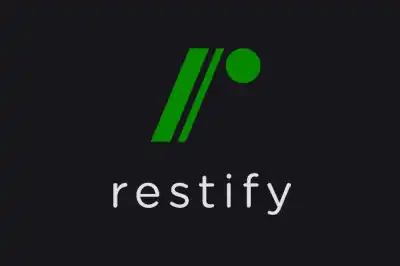Restify is a lightweight framework for Node.js that focuses on the design and implementation of web services and RESTful APIs.
Restify stands out for its focus on efficiency and simplicity, allowing us to develop applications that handle a large number of requests without sacrificing performance.
Highlighted features of Restify include:
- Performance optimization: It is designed to handle a large volume of requests efficiently.
- Flexible routing: It allows for easy and clear route definitions.
- Error management: It provides robust mechanisms for handling errors and returning appropriate responses.
- Support for plugins: It allows for extending functionality through the integration of plugins and middleware.
For more details and documentation about Restify, we can visit the official repository at GitHub - restify/node-restify. Here we will find additional examples and complete documentation to explore all the functionalities that Restify has to offer.
You should probably take a look at the Fastify library read more
How to install Restify
To start using Restify, we first need to install it in our Node.js project. We can easily do this using the npm package manager. We run the following command to add Restify to our project:
npm install restifyThis command will download and install the Restify library in our node_modules directory and add it to our dependencies in package.json.
How to use Restify
Once we have installed Restify, we can start using it to build our API. Next, we will see how to create a basic server, define routes, and handle requests using Restify.
Create a basic server
First, let’s create a file named server.js in our project. In this file, we will set up a basic Restify server:
const restify = require('restify');
// Create the Restify server
const server = restify.createServer({
name: 'MyApiServer'
});
// Middleware to handle request body
server.use(restify.plugins.bodyParser());
// Example GET route
server.get('/hello', (req, res, next) => {
res.send('Hello, World!');
return next();
});
// Example POST route
server.post('/echo', (req, res, next) => {
res.send(req.body);
return next();
});
// Start the server on port 8080
server.listen(8080, () => {
console.log(`${server.name} listening on port 8080`);
});In this code:
- We use
restify.createServerto create an instance of the Restify server. - We apply the
bodyParsermiddleware to handle data in the body of POST requests. - We define two routes: a GET route at
/hellothat returns a simple greeting and a POST route at/echothat returns the content sent in the request. - Finally, we start the server on port 8080 and display a message in the console to confirm that it is running.
Error handling
Restify makes error handling easy by defining a specific middleware to capture them. We can add a global error handling middleware at the end of our route configuration:
// Middleware for error handling
server.on('uncaughtException', (req, res, route, err) => {
console.error(err.stack);
res.send(500, { error: 'Internal Server Error' });
});In this example, we are capturing uncaught exceptions and responding with a generic error message and a status code of 500.
Using plugins
Restify allows for extending its functionality through plugins. For example, we can use the restify.plugins.queryParser plugin to parse query parameters in our requests:
// Middleware to handle query parameters
server.use(restify.plugins.queryParser());With this middleware, we can access the query parameters in our routes using req.query.
